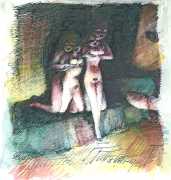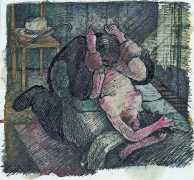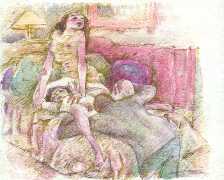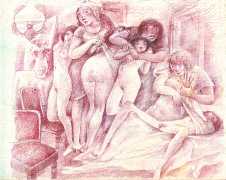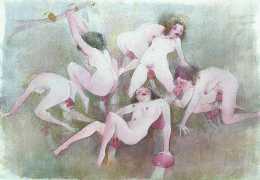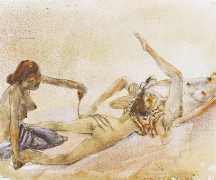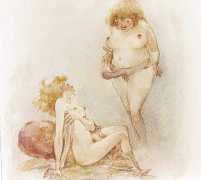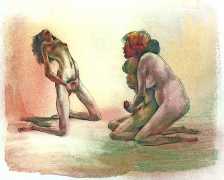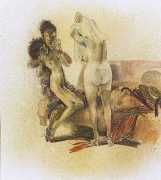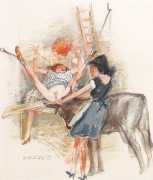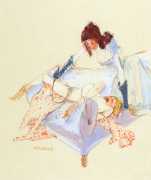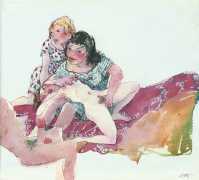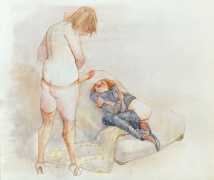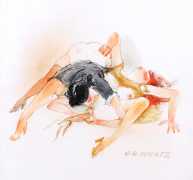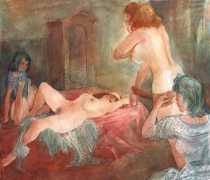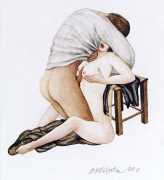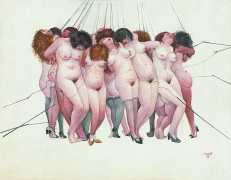If Schatz’s prolific output fell out of fashion after his death, his erotic work went almost unnoticed and unknown, mostly languishing in the private collections of those select clients for whom he had produced work in Vienna during his more hand-to-mouth periods in the late 1920s and early 30s. It is still thought that much of his erotic work dates from the early 1940s, when he undoubtedly did create some of his best erotic work, but it seems most likely that the broad area of sexuality, erotic arousal, intimacy, and gender and power relationships had never been very far from his thoughts throughout his artistic career.
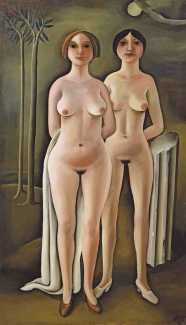
In 1930, influenced by working with Josef Luitpold on Die Neue Stadt, Schatz experimented with a classical style of painting, which included several controversial naked women. ‘Bathers’ and ‘Artistes’, later known as ‘Moon Women’ and ‘Hope’, were thought by many to be too stilted and stylised, one critic calling them ‘rigid and cheerless nudes who look like unclothed store window mannequins’. The critic Max Roden, however, wrote ‘Their form is clear and simple, and one is is deeply moved.’
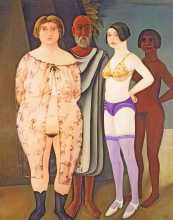
Part of the mixed reception of Schatz’s work was his striving for originality, honesty, and a deep sense of equality. He wanted to depict his subjects with respect, humanity and humility; ‘Artistes’ includes a black woman and a Middle Eastern man, which was Schatz’s response to the everyday racism and prejudice prevalent in Austria at the time.
Between the mid-1920s and his arrest in 1944, it is thought that Otto Schatz probably produced over a thousand drawings, etchings, woodcuts, watercolours and oil paintings on more or less erotic themes. Many were painted as commissions for regular clients, but it is clear that many were experiments, both with different combinations of media and graphic effects, and with subject matter. Compared with much rather mundane and second-rate erotic material being produced in Paris in the same period, every one of Schatz’s compositions is clearly well-planned and executed. In addition to woodcut, he uses every medium available to him, often in striking combinations of strong ink line and shading and expertly-added watercolour
Some of his erotic work, in fact much of it, is more or less transgressive. This small selection includes bondage, flagellation, group sex, children, and cross-generational sex. The two scenes towards the end of this sequence featuring whips against innocent pink skin almost certainly convey some of Schatz’s feelings about the growing sense of foreboding in 1930s Vienna, while the orgy at the end provides a welcome and joyous antidote.
We are very grateful to Hans-Jürgen Döpp for most of these images; Hans-Jürgen, the compiler of many books on erotic art, curates the Venusberg online gallery and bookshop which you can find here.


